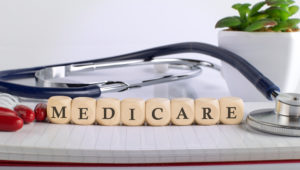April 2017 brought bad news about drug-related fatalities on two fronts. Virginia became the latest state to see dramatic increases in deadly opioid overdoses, and a report from the Governors Highway Safety Association (GHSA) revealed that, for the first time, people killed in traffic crashes were more likely to have drugs in their systems than alcohol.
My Virginia wrongful death attorney colleagues and I have been tracking these tragic trends for many years. Despite recent — and, in our opinion, belated — efforts to address problems like the overprescribing of and addiction to prescription opioid painkillers, more urgent action is needed to keep individuals safe in their own homes and on the road.
An Epidemic of Opioid Abuse
Opioids are chemically engineered versions of opiates like heroin and morphine. Most commonly used to control pain, prescription opioids include many widely taken medications like Vicodin (hydrocode-acetaminophen), OxyContin (oxycodone) and codeine in cough syrup.
Federal and state laws treat opioids as highly addictive and more likely than most medications to cause life-threatening poisonings. Despite this, more people take opioids than ever before, and take them in higher doses with greater frequency. A typical scenario involves a person undergoing surgery or suffering an injury, receiving a prescription for an opioid and becoming addicted. When the person can no longer obtain their drugs legally, he or she resorts to illegal purchases and, frequently, substitutes more-powerful and cheaper alternatives like heroin or fentanyl.
Downward spirals like these contributed to 1,400 fatal opioid overdoses in Virginia during 2016. That represented a 38 percent increase from 2015, with deadly fentanyl overdoses alone rising by 175 percent.
Doctors, nurses and pharmacists have clear roles to play in limiting patients’ initial access to opioids. When a health professional prescribes or distributes powerful prescription painkillers in a negligent or reckless manner, that individual and the health facility that employs him or her can potentially be held responsible for paying damages to a victim in civil court.
Police Slow to Respond to Increase in Drugged Driving
According to GHSA’s Drug-Impaired Driving: A Guide for States, 43 percent of people who died in traffic crashes during 2015 and who had full toxicology screens performed postmortem tested positive for some kind of controlled substance. This outstripped positive alcohol tests (37 percent) for that year and represented a large increase since 2005, when only 28 percent of deceased drivers tested positive for drugs.
Marijuana, at 35.6 percent, topped the list of intoxicating drugs found in drivers‘ systems following fatal wrecks. Opioid use also accounted for a significant percentage of likely causes of deadly crashes, with various studies estimating the increased crash risk for people impaired by opioids at 2-10 times those of sober drivers.
The trend toward higher numbers of drugged drivers have been evident for some time. In 2014, in fact, data collected in part from drivers stopped in Virginia Beach for suspicion of driving under the influence, revealed that around 25 percent of drivers were operating with measurable amounts of controlled substances in their bodies.
When The Hill reported the current statistics on drugged driving compiled by GHSA, it quoted Responsibility.org President Ralph S. Blackman saying, “As drunk driving has declined, drugged driving has increased dramatically and many of today’s impaired drivers are combining two or more substances, which has a multiplicative effect on driver impairment,”
Blackman’s organization worked with GHSA on the drug-impaired driving study and is sponsoring $100,000 grants to state and local police forces to better train officers on recognizing signs that a driver has recently taken drugs. This is an important step, as is Virginia’s recognition of minimal legal blood concentrations of drugs like cocaine and methamphetamines. But the best way to curb drugged driving is to reduce irresponsible drug use all around.
EJL

Rick Shapiro has practiced personal injury law for over 30 years in Virginia, North Carolina, and throughout the Southeastern United States. He is a Board-Certified Civil Trial Advocate by the National Board of Trial Advocacy (ABA Accredited) and has litigated injury cases throughout the eastern United States, including wrongful death, trucking, faulty products, railroad, and medical negligence claims. During his three-decade career, Shapiro has won client appeals before the VA Supreme Court, VA Court of Appeals, NC Supreme Court, SC Supreme Court, WV Supreme Court, TN Supreme Court, and three times before the United States Court of Appeals for the Fourth Circuit, underscoring Shapiro’s trial achievements. In addition, he and his law firm have won settlements/verdicts in excess of $100 million. His success in and out of the courtroom is a big reason why he was named 2019 “Lawyer of the Year” in railroad law in U.S. News & World Report's Best Lawyers publication (Norfolk, VA area), and he has been named a “Best Lawyer” and “Super Lawyer” by those peer-reviewed organizations for multiple years. Rick was also named a “Leader in the Law, Class of 2022” by Virginia Lawyers Weekly (total of 33 statewide honorees consisting of lawyers and judges across Virginia). And in September 2023, Rick was selected as a recipient of the National Board of Trial Advocacy (NBTA) 2023 President’s Award. Although many nominations were submitted from across the country, Rick was just one of eight attorneys chosen by the prestigious National Board which certifies civil trial attorneys across the U.S. Rick was also recently named to Virginia Lawyers Weekly 2024 Virginia’s Go To Lawyers Medical Malpractice. The attorneys awarded this honor are nominated by their colleagues and chosen by a panel from the publication.










Comments for this article are closed.